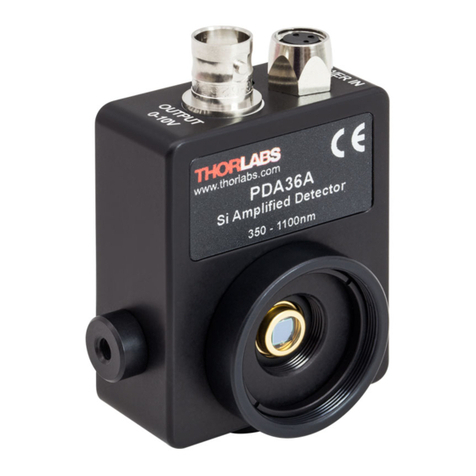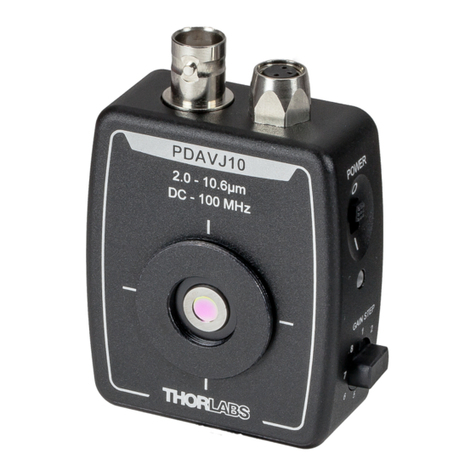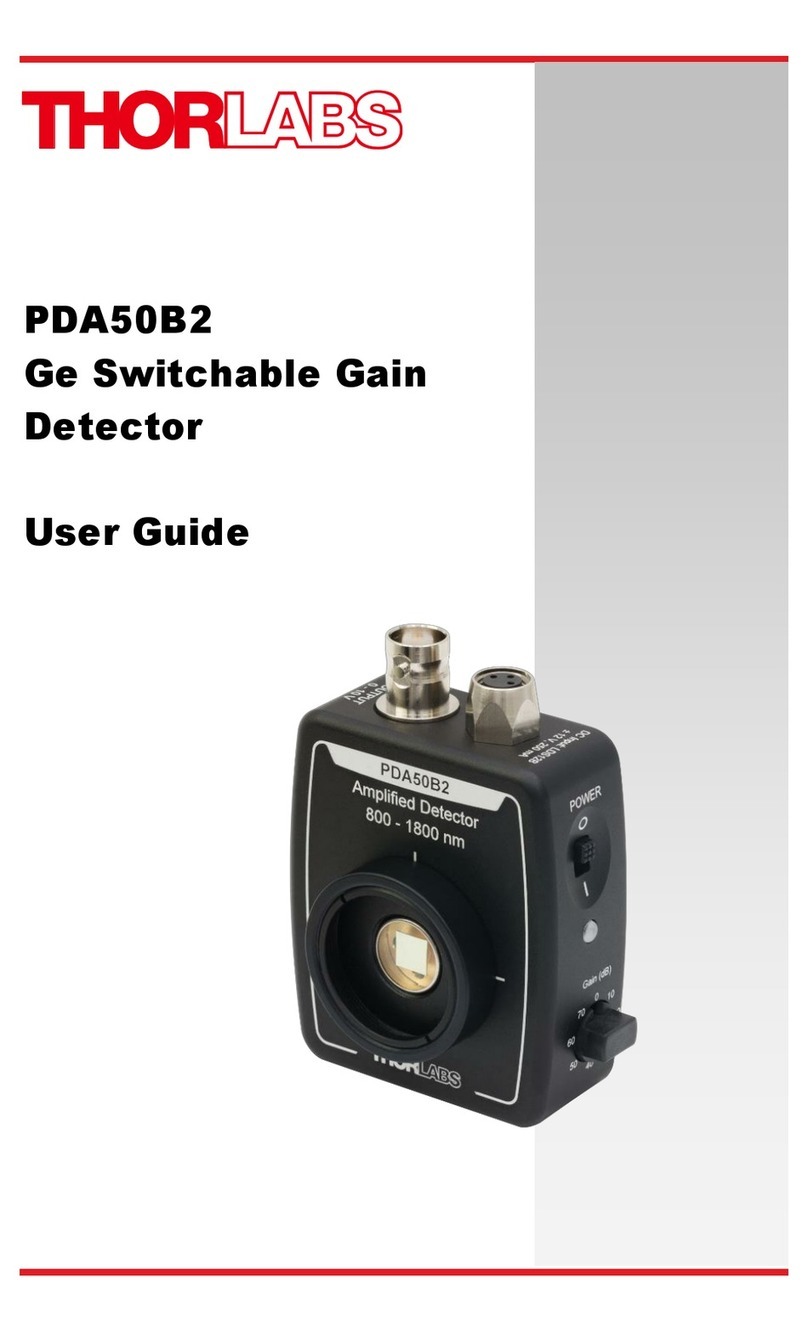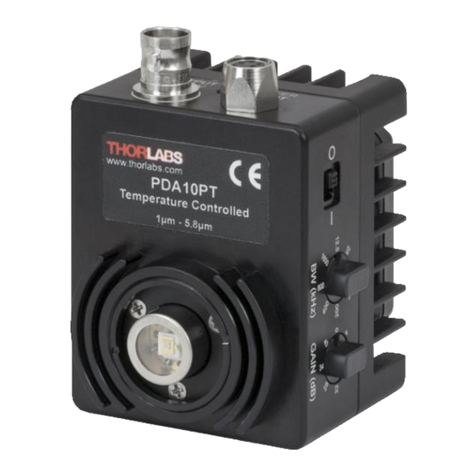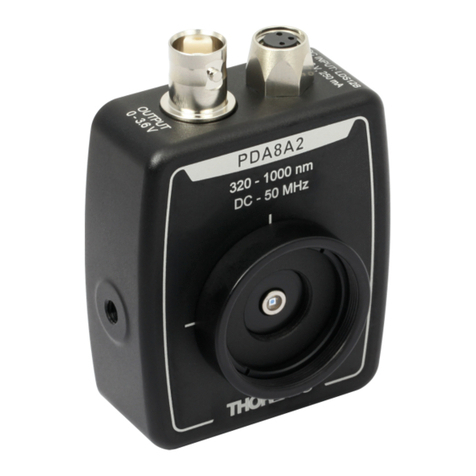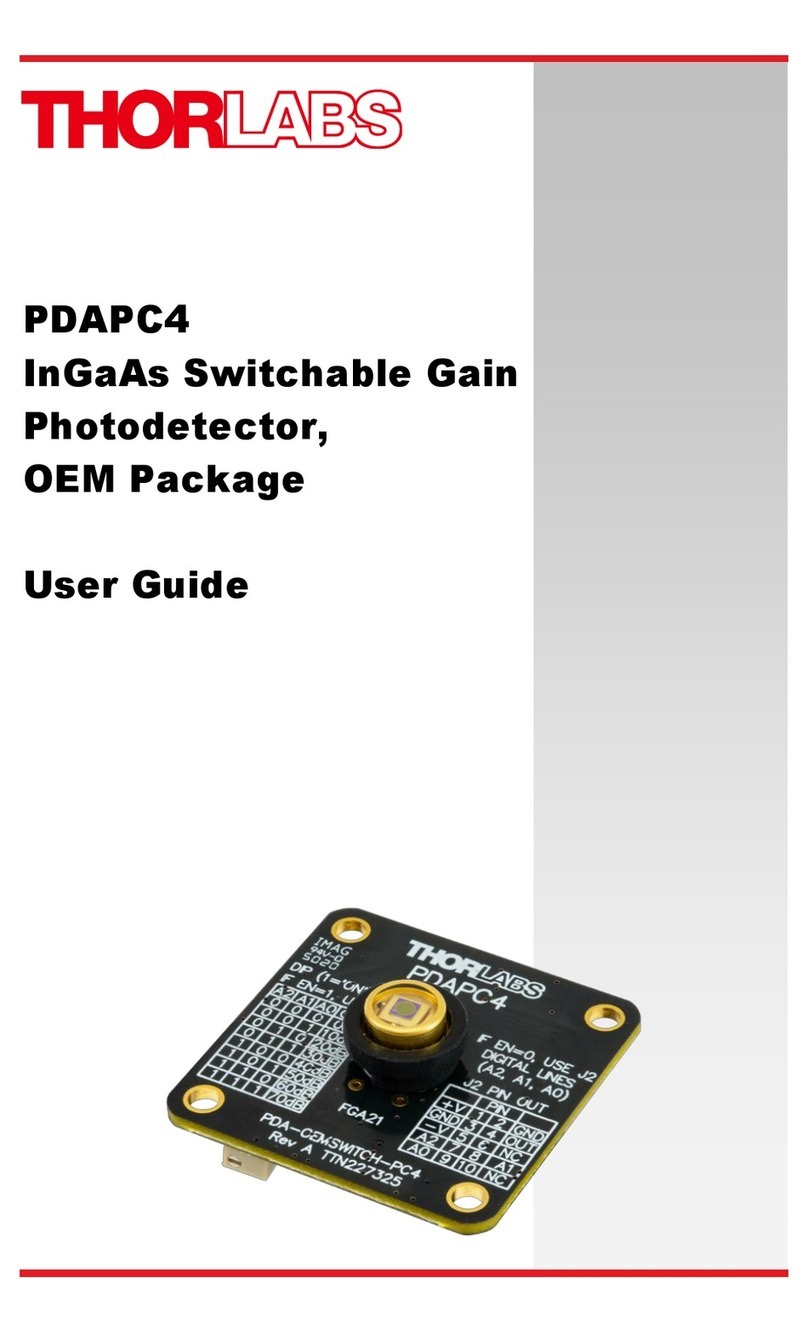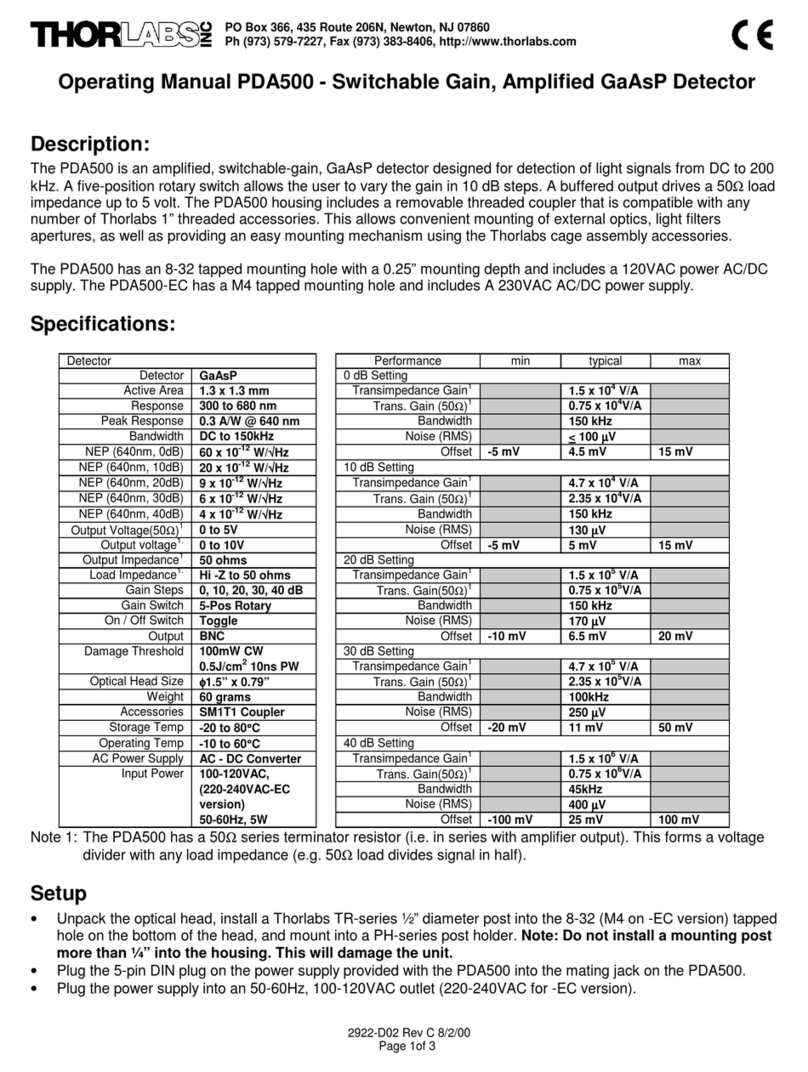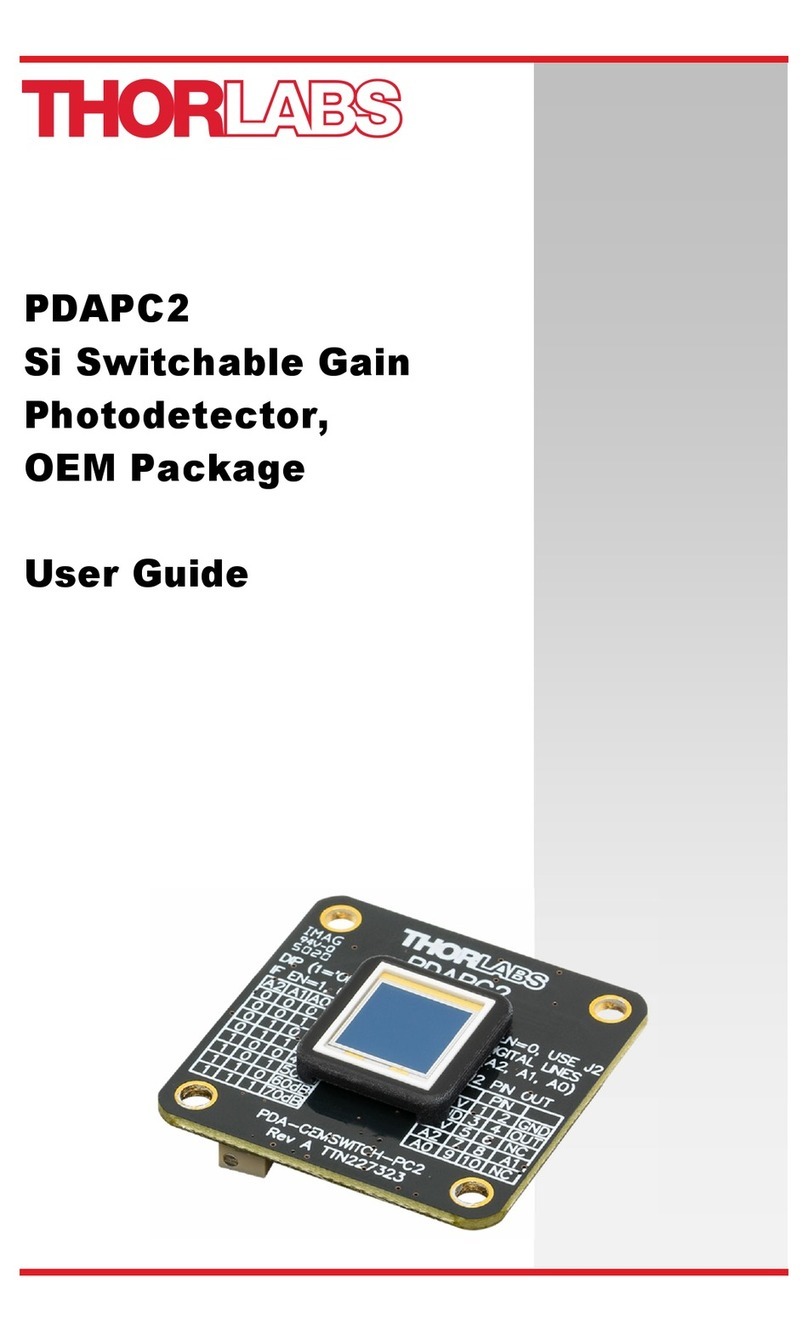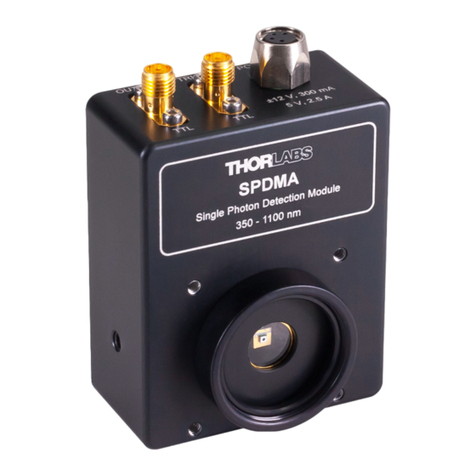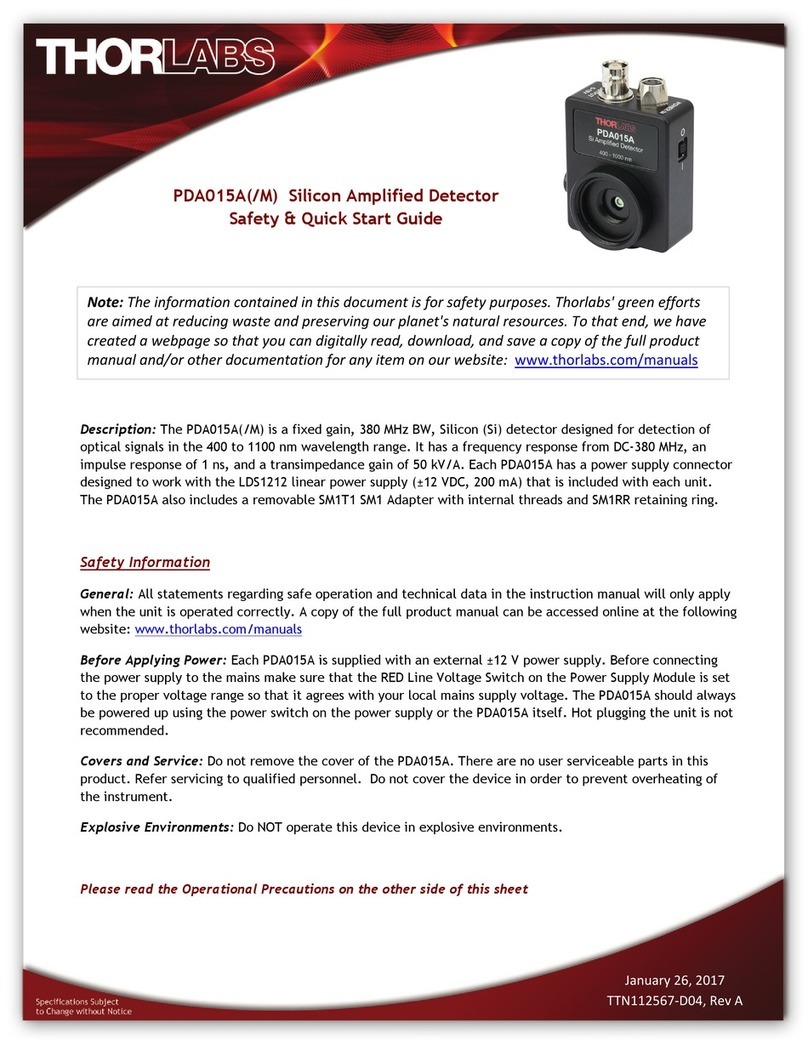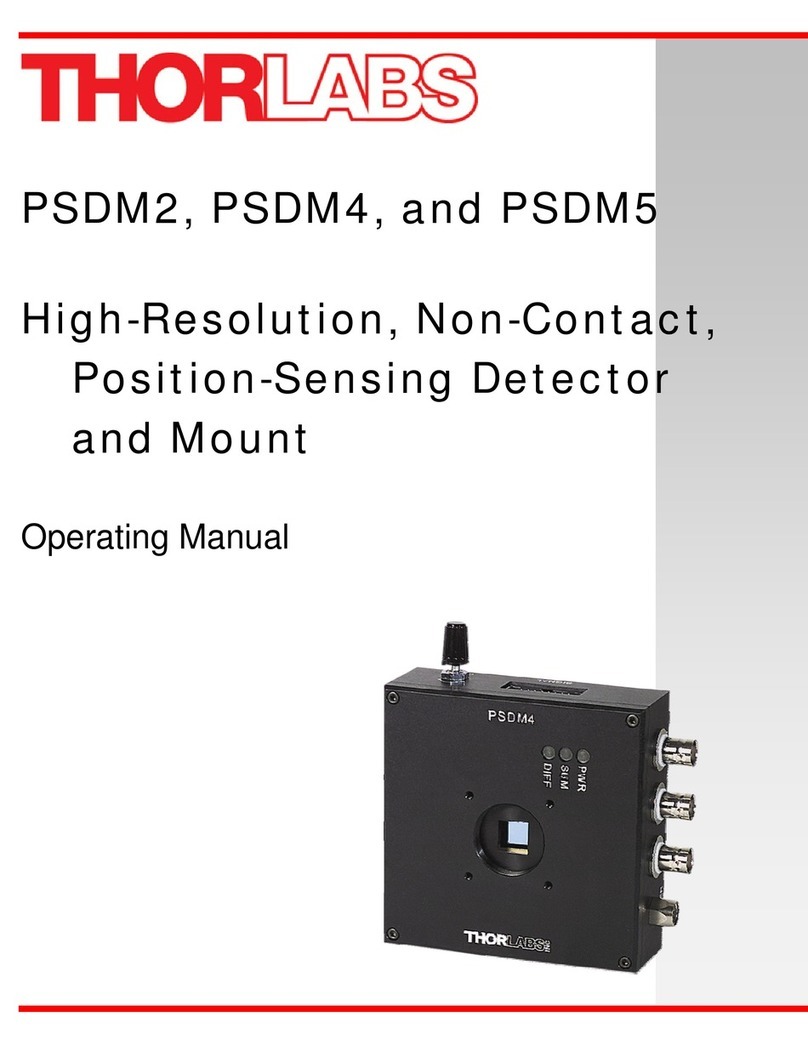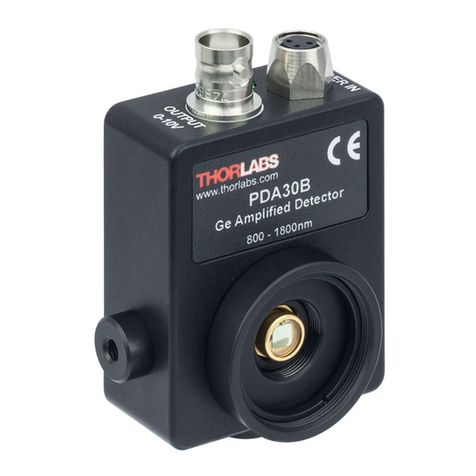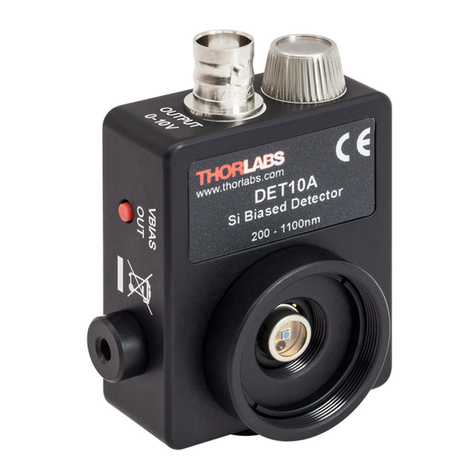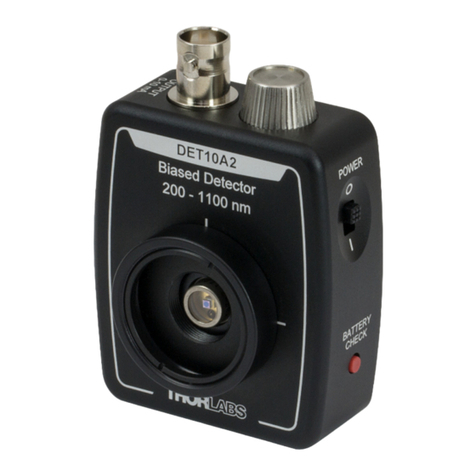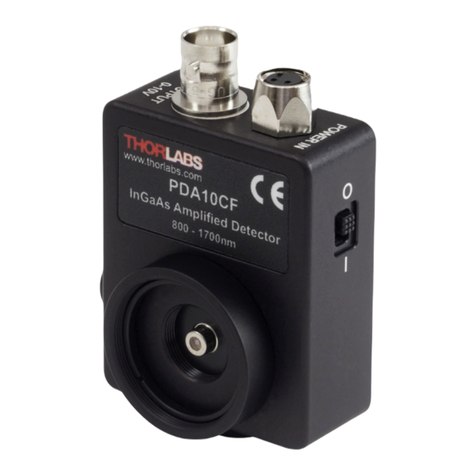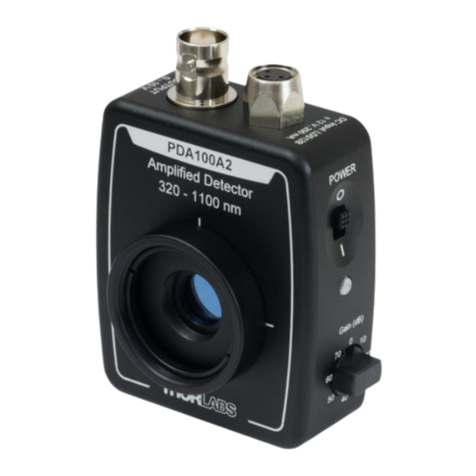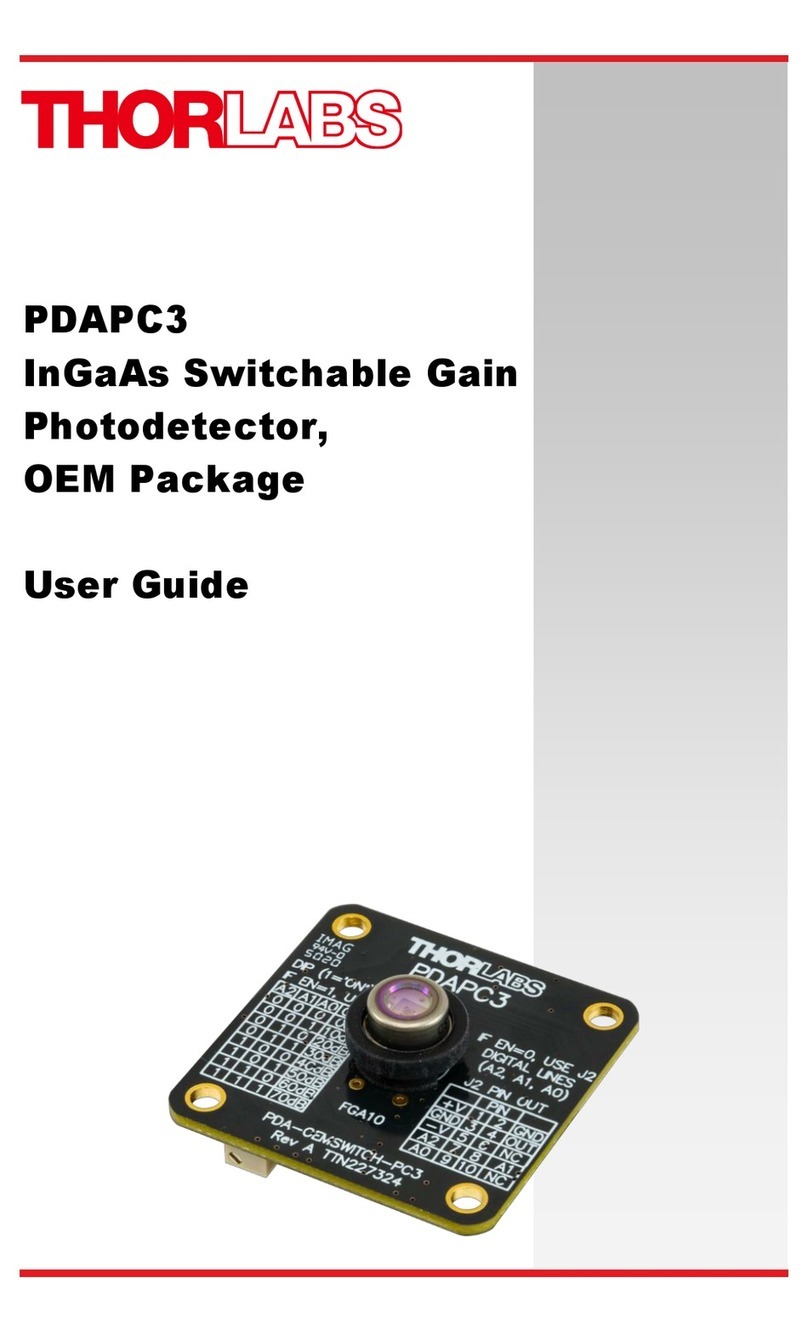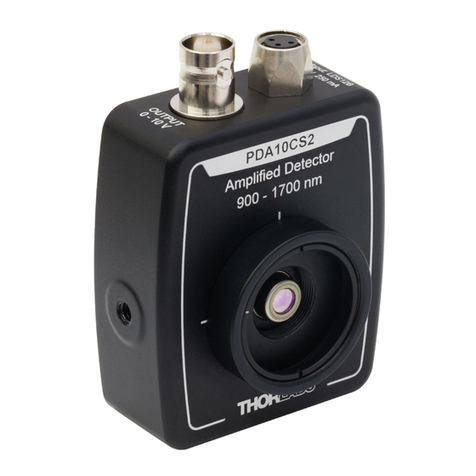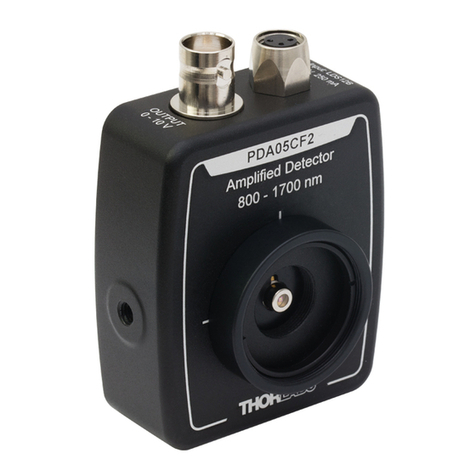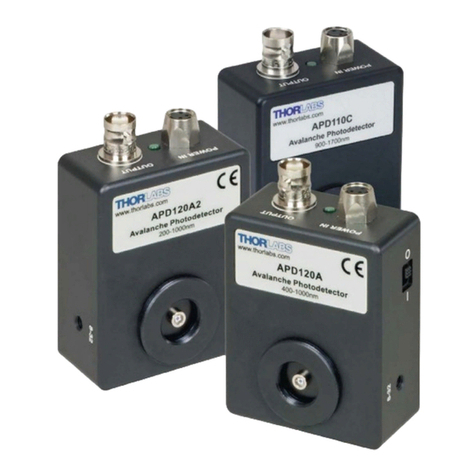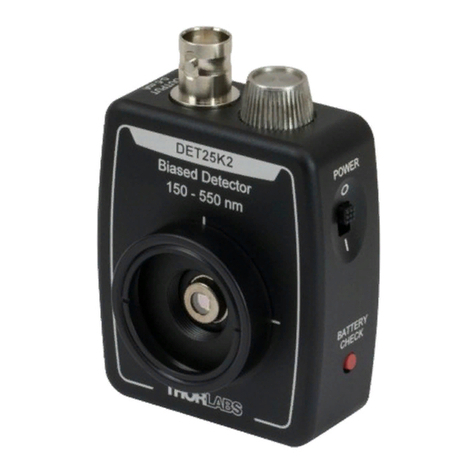
© 2020 Thorlabs6
APD130x
3 Operating Instruction
3.1 Operating Principle
The Thorlabs APD130x series of temperature-compensated Avalanche Photodetectors com-
bine a high sensitivity Si or InGaAs Avalanche Photodiode with a specially designed ultra-low
noise transimpedance amplifier for detection of optical signals from DC to 50 MHz. The buf-
fered output stage can deliver up to 1.8 V into a 50 Wimpedance load. The ultra-low noise
design includes an active low-pass filter to effectively suppress out-of-band noise. No external
high voltage power supply is required for operation.
APD130x series Avalanche Photodetectors have an exceptionally low NEP, making them ideal
for fast low-level light detection applications, such as spectroscopy, fluorescence measure-
ments, laser radar and optical rangefinders. Due to their very high sensitivity the APD130x
series Avalanche Photodetectors can replace Photomultiplier Tubes (PMT) in many applica-
tions. The Avalanche Photodetectors cannot be damaged by unwanted ambient light, which is
critical for many Photomultiplier Tubes.
Avalanche Photodiodes use an internal gain mechanism to increase the sensitivity. Incident
photons generate electron-hole pairs, like in a normal photo diode. By applying a high reverse
voltage, a strong electric field appears that accelerates these electrons and produces seconda-
ry electrons by impact ionization. This leads to an electron avalanche producing gain factors of
up to several hundreds. The amplification depends on the reverse bias voltage and is described
by the M (multiplication) factor. Due to internal processes, the M factor is temperature depend-
ent. At a fixed reverse bias voltage the M factor will change with temperature: in general, with
lower temperatures the M factor will increase, with higher temperatures - decrease.
The APD130x series Avalanche Photodetectors are temperature-compensated. A thermistor
senses the temperature inside the APD130x enclosure, and a special electronic circuit controls
the applied to the APD reverse voltage in accordance with the temperature change. As the M
(multiplication) factor depends on the applied reverse voltage, the temperature dependency of
the M factor can reduced drastically.
Please see section M Factor Temperature Dependency for typical curves.
The APD130x Series is powered by the included external power supply (±12 V, 250 mA) via a
PICO M8 power connector.
3.1.1 Optical Input
The APD130C uses an InGaAs Avalanche Photodiode with a detector active area diameter of
0.2 mm, operating from 900 to 1700 nm nm.
The APD130A uses a Silicon Avalanche Photodiode with a detector active area diameter of
1 mm, operating from 400 to 1000 nm.
The APD130A2 uses an UV-enhanced Silicon Avalanche Photodiode with a detector active
area diameter of 1 mm, operating from 200 to 1000 nm.
The typical responsivity curves can be found in the appendix .
An open beam should be carefully aligned to the detector. Additional focusing lenses can be
easily attached to the Avalanche Photodetectors. The housing is compatible with any number
of Thorlabs 1” and ½” threaded accessories. This allows convenient mounting of external op-
tics, filters, apertures or fiber adapters.
For fiber coupled applications, in case of detectors with an active area of 1 mm, fiber adapters
like Thorlabs S120-xx series can be easily mounted on the optical input. The fiber adapter will
accommodate multi-mode as well as single-mode fiber. For detectors with smaller active areas,
in order to meet specifications, it is recommended to focus the optical signal out of the fiber
onto the detector. Details please see in the appendix .
19
13
23
